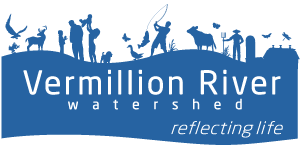VRWJPO, Dakota SWCD Projects Receive Clean Water Fund Grants
The Minnesota Board of Water and Soil Resources (BWSR) approved $12.7 million in Clean Water Fund grants on Dec. 16 to improve water quality in streams, lakes, and groundwater across the state. Most of the grant funding is allocated for voluntary conservation projects across Minnesota, including funding for projects that focus on improving and protecting drinking water.
The $12.7 million will fund 31 grants dedicated to specific projects and practices. Four grants will support multipurpose drainage management, and four grants will focus on projects that specifically address drinking water issues.
Two of the 31 specific project grants will go toward efforts in the Vermillion River Watershed. One of these is a planned dry pond with a wet sedimentation forebay in Foxborough Park, Lakeville, which is next to the North Creek tributary. This pond will capture and reduce sediment and total phosphorus from an existing stormwater outfall that discharges directly to North Creek. The basin would be constructed within an existing park greenspace and intercept stormwater from the outfall to treat the pollutants. The project will reduce an estimated 18 tons per year of sediment and 32 pounds per year of phosphorus, from a stream that is anticipated to be placed on the 2022 federal impaired waters list.
The other is a ravine stabilization adjacent to Ravenna Trail (Dakota County Rd. 54). Portions of the lower Vermillion River are abutted by steep, erodible hillsides that deposit sediment directly in the river during rain events and contribute to this reach of the Vermillion River being impaired for turbidity. VRWJPO, in partnership with Dakota County and Dakota County Soil & Water Conservation District, seeks to stabilize 3,600 linear feet of two heavily eroded ravines that deposit sediment into the river by installing armoring/rock-lined channel, ravine bank and channel stabilization, low-flow drop structures, riprap check dams and plunge pools, and other practices. This is estimated to reduce 130 tons per year of total suspended solids and 78 pounds per year total phosphorus.
Additionally, the Dakota County Soil & Water Conservation District’s Drinking Water Protection Project was among the four drinking water projects that received grant funding. The project’s goal is to reduce nitrates in groundwater sourced drinking water throughout Dakota County. This will be accomplished by implementing groundwater protection practices in areas that are vulnerable to contamination. This includes both private wells and public water supplies and will focus on townships that have testing data indicating elevated nitrates in drinking water. Cover crops will be the primary practice along with harvestable covers and restoring perennial vegetation in critical locations.
This is phase 2 of this multi-year project. An estimated 1,000 acres of cover crops, 200 acres of harvestable covers, and 10 acres of restored perennial vegetation will be established through this project and an estimated 7,500 pounds of nitrogen will be prevented from reaching groundwater that is used for drinking water. This work is being done in partnership with Dakota County, the North Cannon River Watershed Management Organization, and the VRWJPO.
About the Minnesota Clean Water Fund
Minnesota voters approved the Clean Water, Land and Legacy Amendment in 2008 to protect, enhance, and restore wetlands, prairies, forests, and fish, game, and wildlife habitat; to preserve arts and cultural heritage; to support parks and trails; and to protect, enhance, and restore lakes, rivers, streams, and groundwater. The Clean Water Fund receives 33% of the sales tax revenue generated by the Legacy Amendment. More information about the Clean Water Fund is available here.


